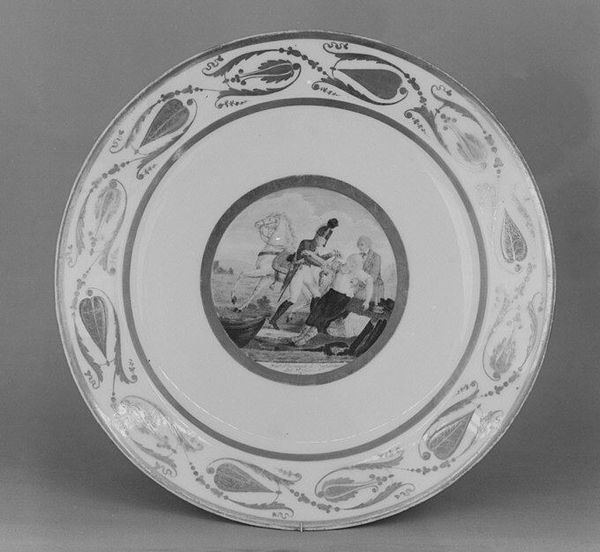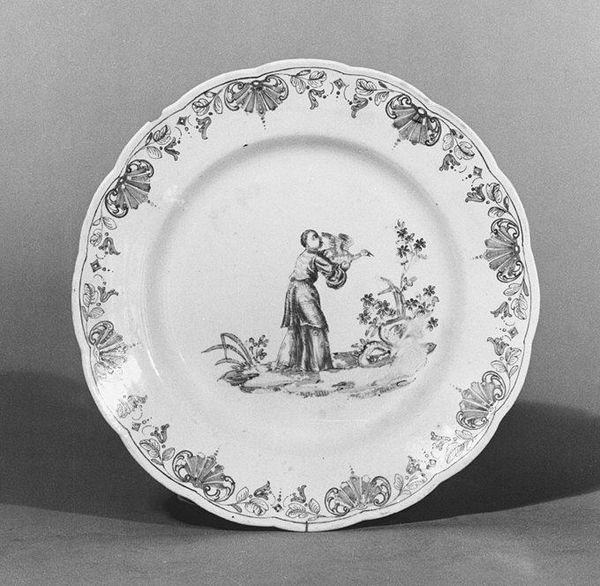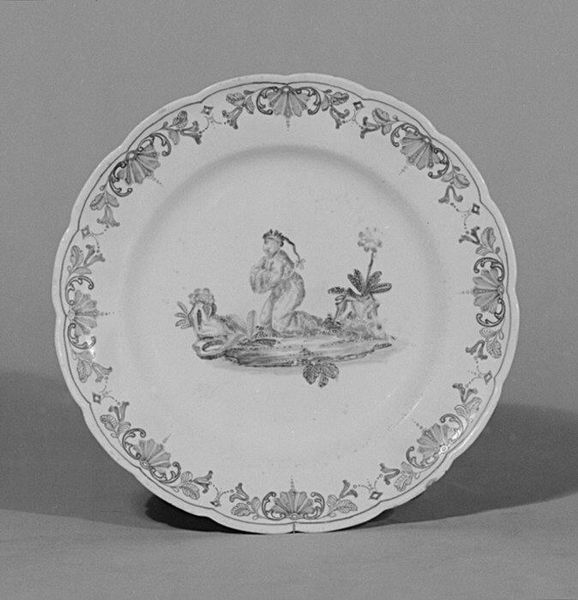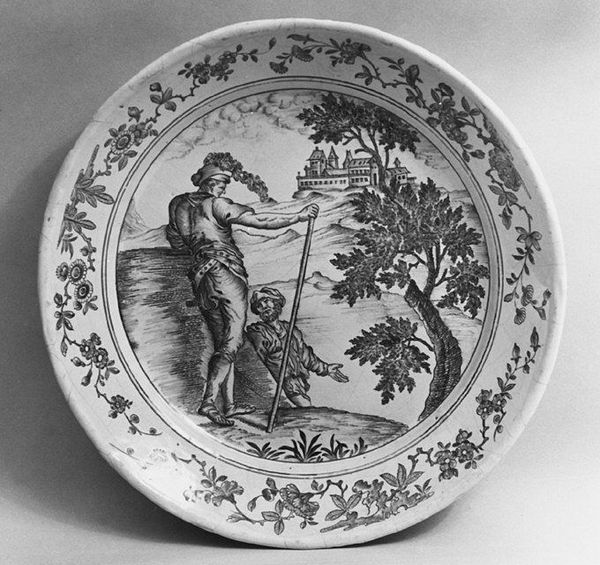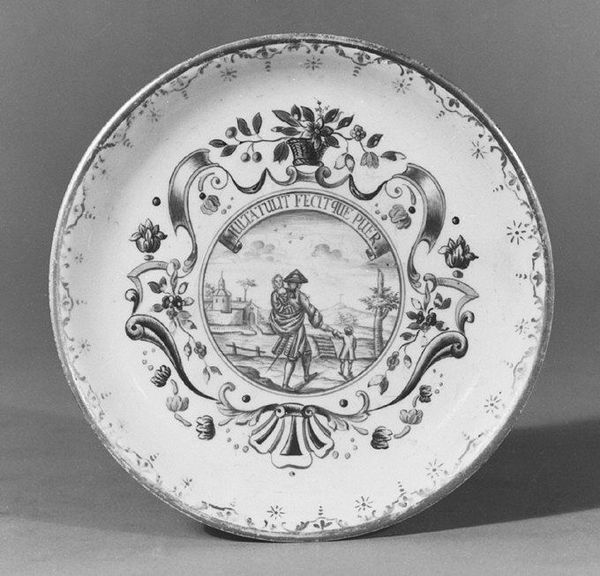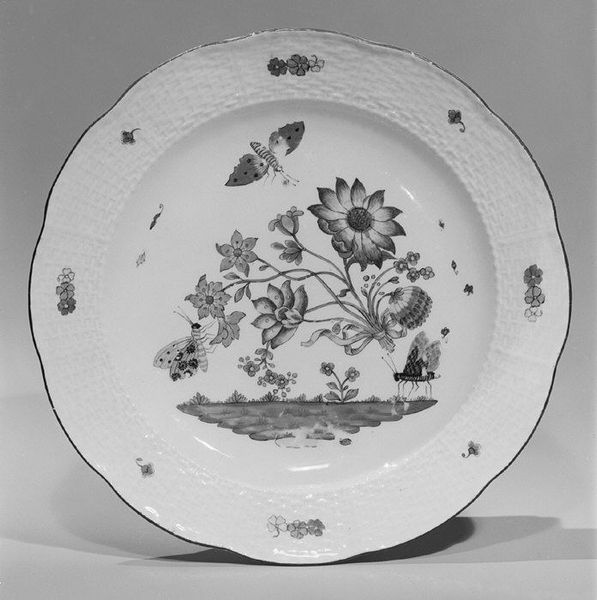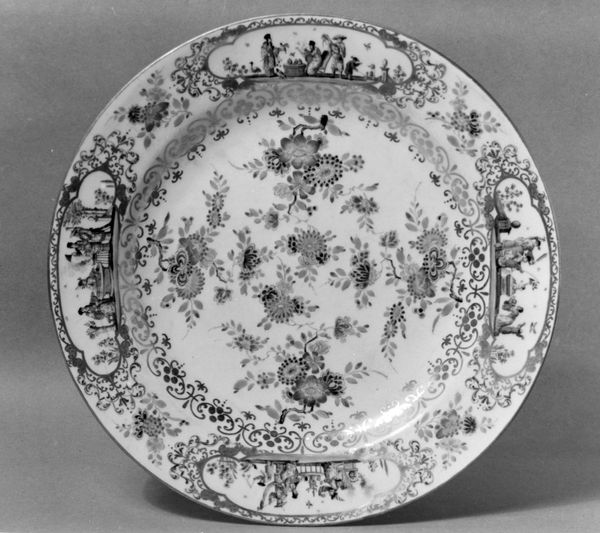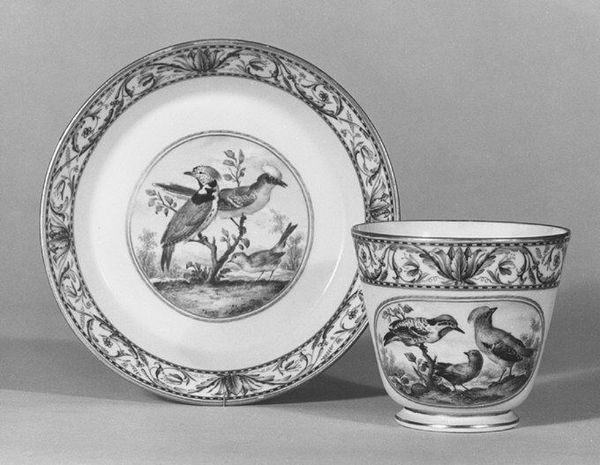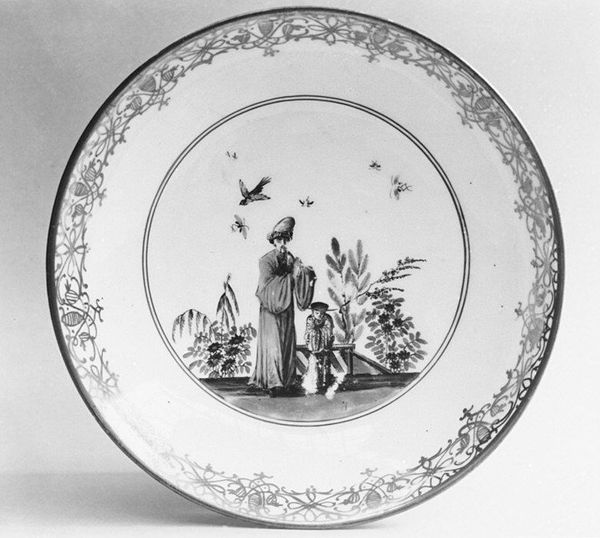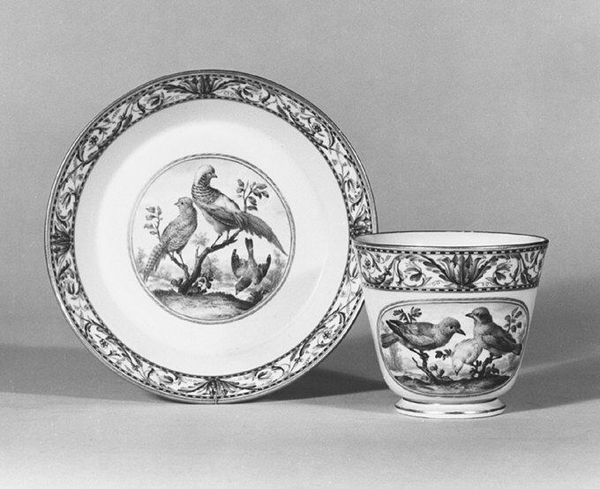
ceramic, sculpture
#
baroque
#
animal
#
human-figures
#
ceramic
#
stoneware
#
sculpture
#
black and white
#
genre-painting
#
decorative-art
#
monochrome
Dimensions: H. 13/16 in. (2.1 cm): Diam. 9-5/8 in. (24.4 cm)
Copyright: Public Domain
Curator: This object, a Plate created by Adam Friedrich von Löwenfinck between 1736 and 1749, invites a playful analysis. The ceramic stoneware features monochrome decoration, currently held at the Metropolitan Museum of Art. Editor: The first thing I notice is the whimsical feel. Despite being rendered in monochrome, there's a delightful narrative unfolding here. The balance between the central image and the decorative border is quite pleasing too. Curator: Indeed. Let us delve into its formal aspects. Observe the radial composition, how it guides the eye to the central motif of the figure riding the deer-like animal. Notice also the division between inner field and decorated rim; that articulation is not merely ornamental, but integral. Editor: For me, that central image of a figure on what appears to be a stag immediately evokes themes of the hunt, or perhaps a secular, even comical, echo of Saint Eustace. The birds overhead could suggest freedom, or maybe the omnipresence of the natural world. Curator: Perhaps. But the iconography, while interesting, serves a purpose within the overall structure. The negative space surrounding the figures is as critical as the forms themselves, shaping the rhythmic play between light and shadow across the plate’s surface. Editor: You're right, the stark monochrome emphasizes the symbolic contrast. Dark figure against light ground allows for visual clarity and heightened impact. Considering that plates were often made to commemorate special occasions, one has to wonder what sort of celebration or meaning was embedded in the object. Curator: And how that meaning functions visually! The floral patterns surrounding the scene echo and amplify its central theme without overpowering it. It is a masterful balance of design and symbolism, with the outer rim serving as a structured counterpoint to the whimsical scene it encloses. The interplay is dynamic, sophisticated. Editor: I'm left pondering what the cultural context was. A ceramic plate during that era served a utilitarian purpose, but in decorative artwork like this piece, domestic use converges with layers of symbolism. That intersection is what truly holds my attention. Curator: Ultimately, our separate approaches converge toward one point: acknowledging both structural refinement and the fascinating layers of embedded significance, the lasting allure of this plate crafted by Löwenfinck continues to be an item of both practical value and cultural artifact. Editor: Absolutely. This deep dive makes one appreciate the rich historical dialogue encoded within the visual language of even the most humble of objects.
Comments
No comments
Be the first to comment and join the conversation on the ultimate creative platform.
